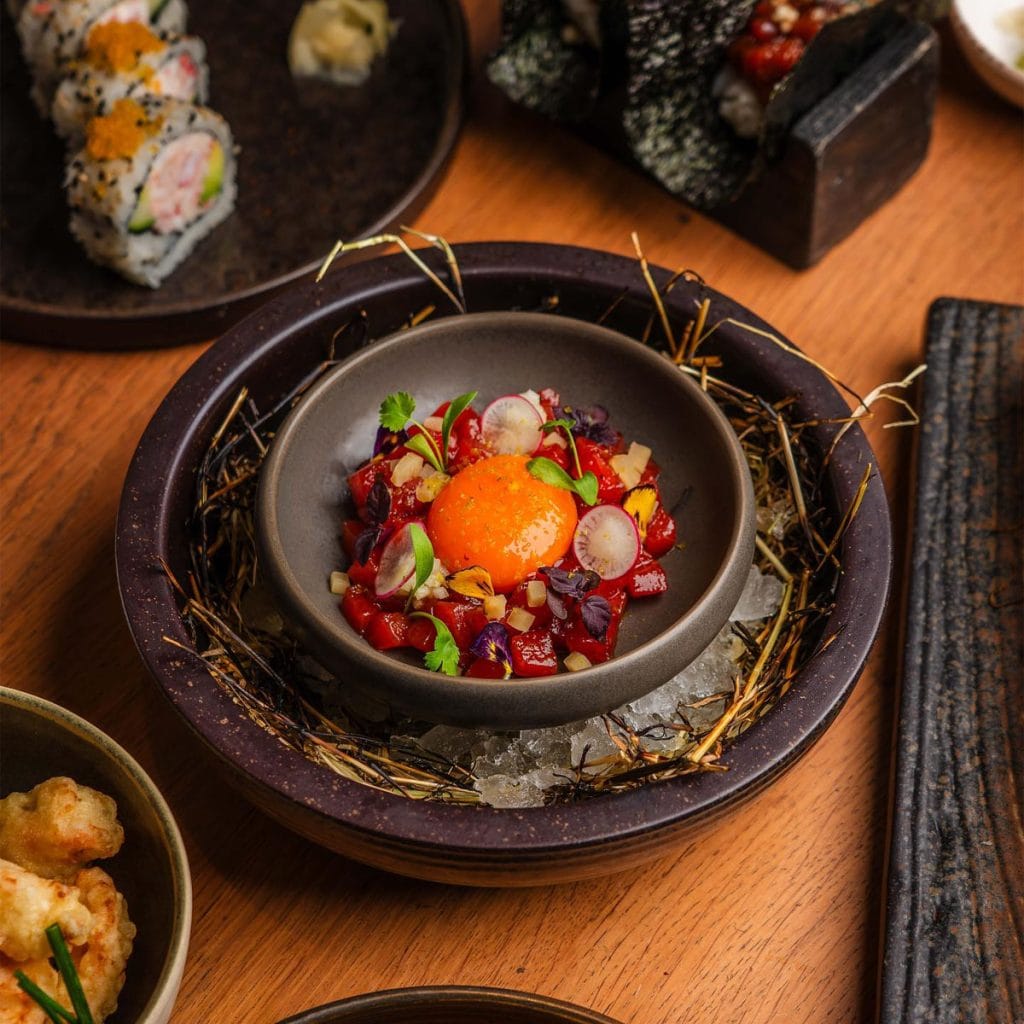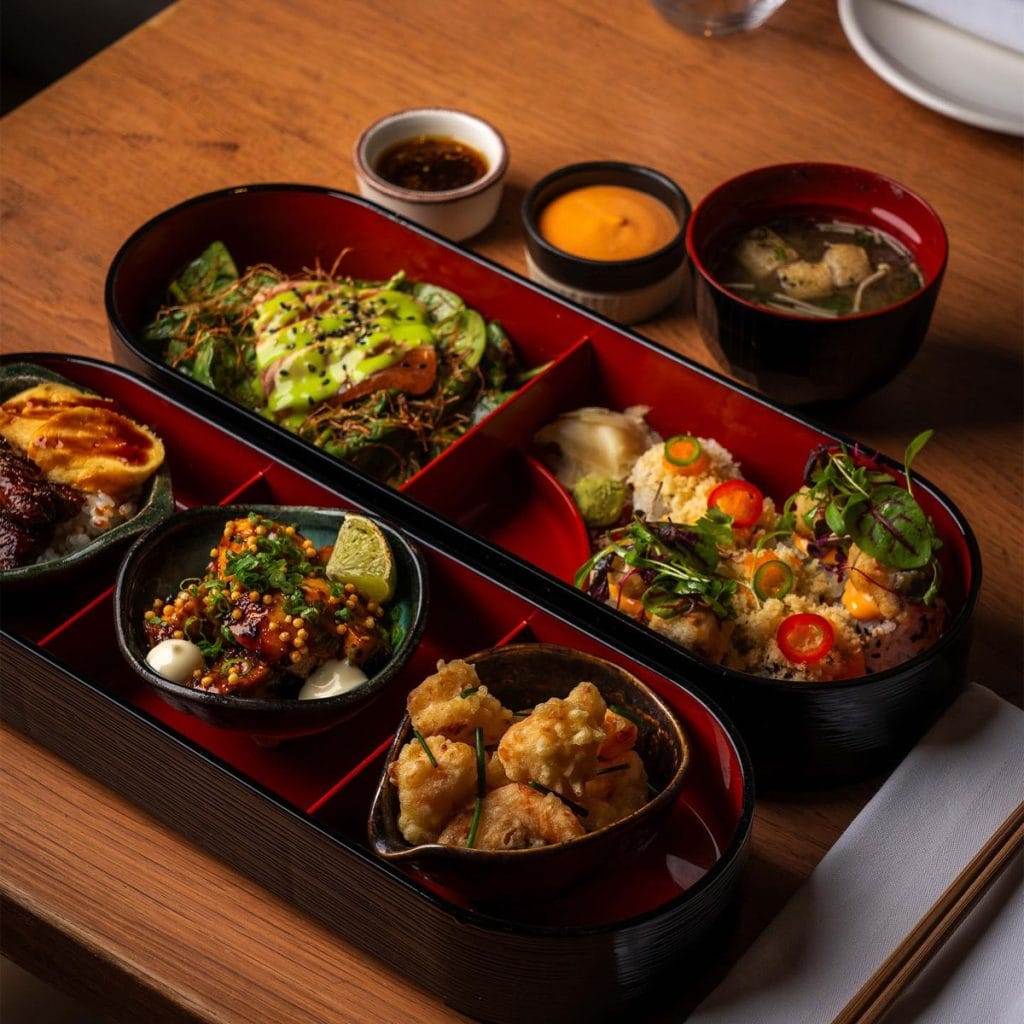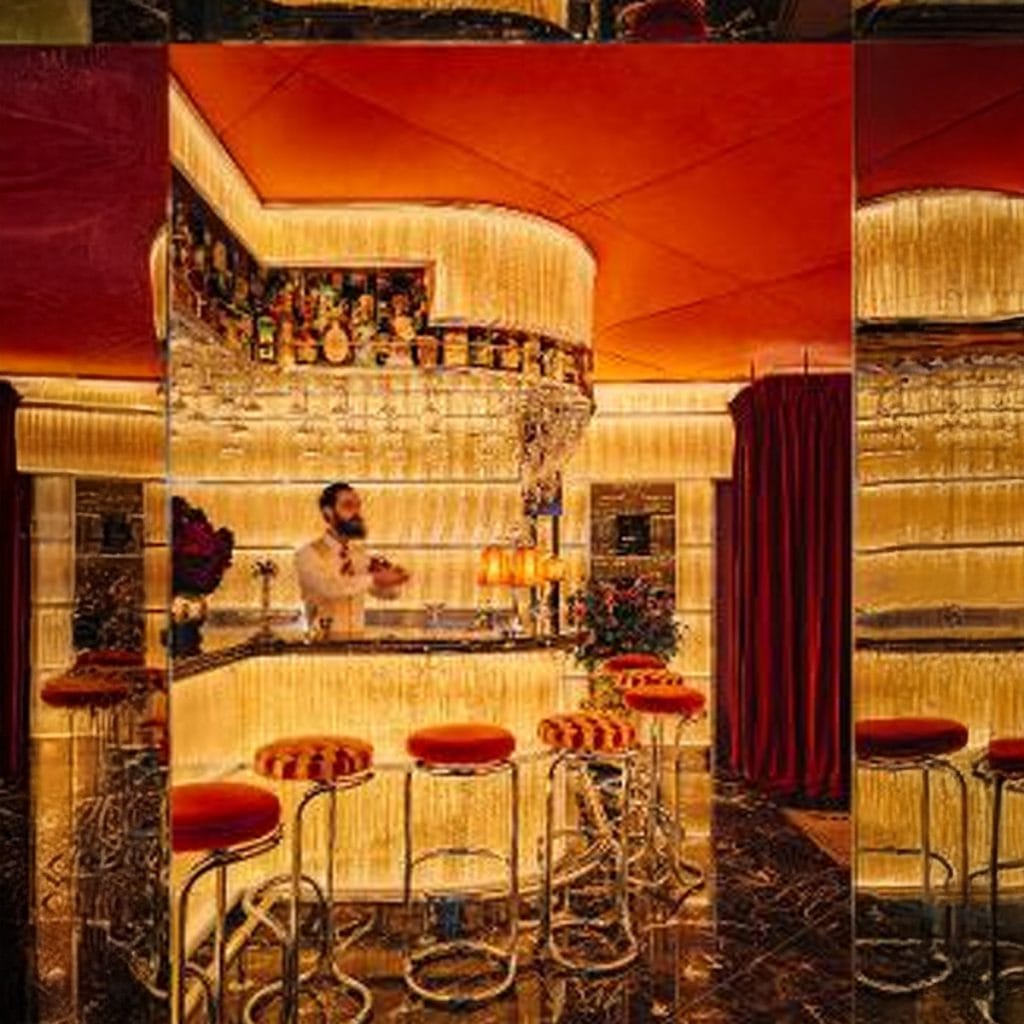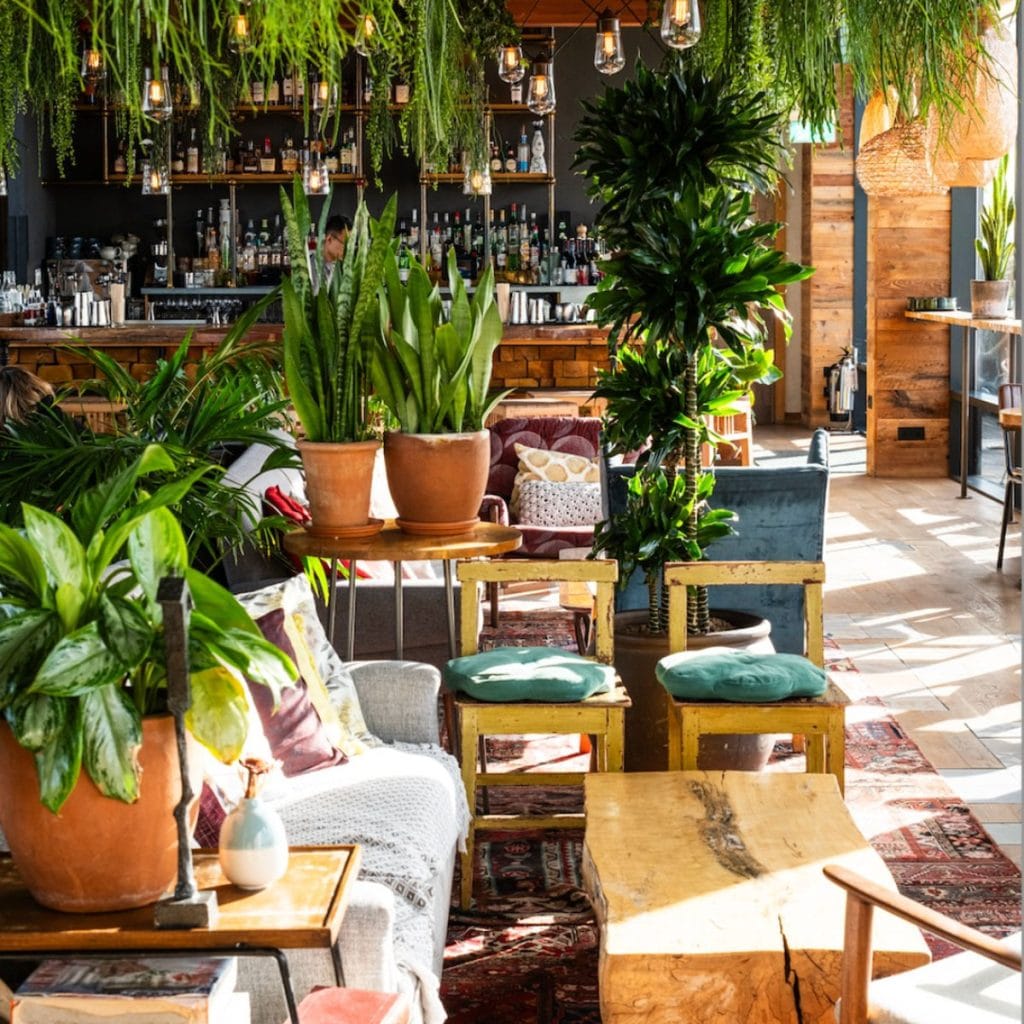In a city where dining trends evolve faster than seasons, TAKA Marylebone has emerged with something rare and resolute. It is a restaurant shaped by duality, fusing Japanese heritage with a British sense of place, creating dishes that feel both refined and rooted. From its timber-clad interiors to the delicate balance of its tasting menus, TAKA represents a new generation of contemporary Japanese dining in the capital.
As diners grow increasingly interested in where their food comes from and how it is made, TAKA positions itself at the intersection of authenticity and innovation. It is not merely a stylish eatery on Marylebone High Street, but a study in cultural synthesis. At its core are two Tokyo-raised siblings who saw in London an opportunity to bring Japanese precision to the vibrancy of British ingredients. Their vision, born in one city and refined in another, now defines one of the most distinctive restaurants in central London.
The Datsenko Foundation: A Global Concept with Local Heart
TAKA is the creation of Andrey and Anastasia Datsenko, a brother-and-sister duo whose upbringing in Tokyo formed the backbone of their culinary philosophy. Their early restaurant in Japan reflected a clear ambition: high-quality Japanese food, served with modern flair, yet priced to attract a broad and curious audience. This formula would prove adaptable, but it was their decision to bring the brand to London in 2017 that marked a significant shift in scope.
Their first UK site opened in Shepherd Market, Mayfair, a compact space designed to introduce TAKA’s identity to a discerning London crowd. The official company behind the brand, TAKA MARYLEBONE LTD, was incorporated in 2016 and adopted its current name in 2019, a move that foreshadowed the arrival of their more ambitious flagship.
Why Marylebone Was the Natural Next Step
In autumn 2020, TAKA Marylebone opened at 109 Marylebone High Street, four months behind schedule due to pandemic-related delays. The decision to expand into this location was bold. The site had previously been home to the Providores and Tapa Room, an iconic fusion restaurant that had occupied the building for 18 years. Taking over a beloved culinary address presented both an opportunity and a challenge. On the one hand, it offered immediate credibility in a well-established foodie neighbourhood. On the other, it demanded a fresh identity strong enough to hold its own legacy.
TAKA rose to the occasion by refining its culinary focus. The Marylebone site was designed from the ground up to express a more mature iteration of the brand. The menu, the interior, and the guest experience were all rethought to reflect a broader vision: contemporary Japanese food underpinned by heritage but elevated by British produce and international ideas.
A Fork in the Road: Rebranding Mayfair into Maru
Shortly after the Marylebone opening, the Datsenkos restructured the business in a move that clarified its market segmentation. The original Mayfair site was rebranded as Maru, an entirely distinct dining experience led by Executive Chef Taiji Maruyama. While TAKA Marylebone offers an upscale yet informal setting, Maru is an intimate omakase restaurant with only ten seats and a 20-course menu priced at £150 per person.
This strategic split served two purposes. It allowed the group to explore haute Japanese dining without confusing its Marylebone clientele, and it preserved the TAKA brand’s more approachable, sharing-style format. The move reinforced each site’s identity and provided clarity for customers. Importantly, it also positioned the group to serve both casual epicureans and committed connoisseurs.
For clarity, it is worth noting that TAKA and Maru are unrelated to Taku, another omakase restaurant located in Mayfair. Despite the name similarity and proximity, Taku is an entirely separate enterprise led by Chef Takuya Watanabe.
Japandi Meets Georgian: A Restaurant Designed for Atmosphere
The physical space at TAKA Marylebone is considered as its menu. Designed by B3 Designers, the interiors express a minimalist style rooted in what has become known as Japandi—a blend of Japanese restraint and Scandinavian warmth. The result is an elegant, modern space that also nods to the building’s original Georgian structure.
Natural timber features prominently, including walls clad in Yakusugi, a traditional charred wood known for its character and durability. The bar, clad in terrazzo and curved to reflect urban Japanese design cues, is visually anchored by a feature wall of backlit Japanese umbrellas that cast sculptural shadows across the space.
The layout spans two levels. On the ground floor, vaulted ceilings give the dining room a sense of drama. Upstairs, a more intimate environment takes over, with earth-toned walls and light oak furniture echoing domestic interiors found in Tokyo or Kyoto. This thoughtful zoning allows the restaurant to cater to both lively dinners and quieter meals with equal success.
Fun Fact: The Yakusugi wood used in the wall design undergoes a traditional burning process that dates back to the 18th century, originally used in Japan to make homes more fire resistant.
Philosophy on the Plate Rooted in ‘Shun’ and ‘Chisan Chisho’
TAKA’s culinary identity is underpinned by two core Japanese philosophies. The first is Shun, the idea that ingredients should only be served at the very height of their seasonal best. It is not simply about freshness, but about peak flavour and nutritional balance. This means that certain dishes appear on the menu only briefly, creating a fleeting experience that rewards those who return at different times of the year.
The second is Chisan Chisho, or “local production for local consumption.” This value drives TAKA’s commitment to sourcing ingredients from British farmers and producers. It is a deliberate response to a market increasingly concerned with provenance. By blending Japanese techniques with local sourcing, TAKA offers a uniquely sustainable dining model that reflects both cultural specificity and environmental awareness.
Together, these philosophies result in a rotating menu that evolves with the seasons and the local larder. The approach not only creates variety for diners but also offers chefs the creative flexibility to work with nature rather than against it.
The Producers Behind the Plate TAKA’s ‘Superhero Suppliers’
Transparency is not just a branding tool at TAKA. It is part of the experience. The restaurant openly celebrates its network of trusted partners, which it refers to as “superhero suppliers.” By naming these producers on its menu and website, TAKA builds a narrative of quality and trust.
Some notable suppliers include:
- Tajimaya Wagyu, Kagoshima: A5-grade Wagyu and authentic Kobe beef, among the rarest offerings in the UK.
- Ginger Pig Butchers, Yorkshire: Sourcing high-welfare, rare-breed meats with traditional British provenance.
- Loch Duart Salmon, Scotland, and Kernow Sashimi, Cornwall: Providers of sustainable, traceable fish.
- Nama Yasai, Sussex: Specialising in Japanese vegetables grown on British soil.
- Hachi Bakery, London: Makers of the bespoke milk bread used in the now-famous Wagyu Sando.
Each of these relationships reflects the Chisan Chisho approach while also reinforcing the brand’s dual cultural lens.
Signatures That Define the Menu: From Tempura to Wagyu
TAKA’s menu is structured to encourage shared plates and social dining. It includes cold dishes, items from the robata grill, fried creations, and vegan selections. Several standout dishes have become touchstones of the experience.
- Wagyu Sando (£52): Featuring Kagoshima A5 Wagyu on Hachi Bakery milk bread, this Instagram-ready sandwich is visually striking but often elicits mixed reviews. Some diners question its texture and balance, while others find the sauce overpowering.
- Black Cod Miso (£37.50): Served with yuzu miso and grilled lime, this dish consistently earns praise for its balance of sweetness and citrus.
- Popcorn Shrimp Tempura (£16): Crisp, playful and moreish, this dish is paired with spicy mayo and butter ponzu.
Other inventive plates include Yellowtail Sashimi with cacao, Mochi Flatbread served with a brush and nori butter, and the umami-rich Nasu Dengaku, which has become a standout on the restaurant’s vegan menu.
The Chefs Behind the Counter: Executive Precision and Team Synergy
At the centre of TAKA Marylebone’s culinary direction is Executive Chef Taiji Maruyama, whose career has been shaped by some of the most respected institutions in modern Japanese dining. Having trained under Nobu Matsuhisa at the original Nobu London and later leading the kitchens at The Dining Room at Beaverbrook, Maruyama brings with him not only technical mastery but also a deep understanding of fusion done well.
His work defines both TAKA and its sister restaurant, Maru, where he exercises complete creative control over a 20-course omakase experience. At Marylebone, his influence is evident in every dish, from the presentation to the philosophical framework that governs the sourcing of ingredients and the construction of flavours.
Working alongside him is Head Chef Jonathan Dowling, whose previous collaboration with Maruyama at Beaverbrook has resulted in seamless execution and continuity. Dowling’s day-to-day leadership ensures that the Marylebone site operates at a consistently high standard, even as the menu shifts with the seasons.
Respecting the Ingredient: The ‘Head to Tail’ Ethos in Action
Maruyama’s culinary values go beyond presentation. He is a committed advocate of the head-to-tail philosophy, a practice that aims to honour the whole ingredient rather than just its most prized parts. Nowhere is this more apparent than in TAKA’s treatment of Wagyu beef and organic poultry.
Dishes such as the Wagyu Dripping Rice Bowl use rendered fat from the beef to enrich grains with intense umami, turning what might be waste in another kitchen into a feature. Similarly, the Yakitori Omakase, offered periodically, features a deconstructed chicken grilled over coals, with each component treated and seasoned individually.
This ethos adds dimension to TAKA’s sustainability claims. It is not just about sourcing ethical ingredients, but also using them with respect and ingenuity.
Service with a Smile and the Occasional Delay
TAKA promotes a service culture built around storytelling. The staff are well-trained, friendly, and capable of articulating the restaurant’s sourcing philosophy and dish origins. Diners are often encouraged to touch, share, and ask questions, creating an engaging and informal atmosphere.
However, public reviews suggest that operational execution sometimes falters. On platforms such as OpenTable and TheFork, diners consistently praise the food and staff demeanour, but many note that wait times for dishes can be lengthy, especially during peak periods. A few mentioned that the service felt “overstretched,” with long pauses between courses that undermined the flow of the experience.
This suggests an imbalance between the complexity of the kitchen’s output and its capacity to maintain tempo on busy evenings. While the staff receive praise for their charm and enthusiasm, the rhythm of the meal may require some patience.


Lunch, Dinner, or Tasting: Which Format Suits You?
TAKA offers a flexible dining experience that caters to a variety of guests. Its menus range from curated tasting formats to weekday bento boxes.
- À La Carte: The backbone of the dining experience, this format allows guests to pick and choose across five sections: Raw to the Core, Robata, Fry or Die, Plant Based Power, and Rock and Rolls. Prices reflect the restaurant’s premium positioning, but allow for personalisation.
- Signature Set Menu (£65): Offers a curated experience with a selection of standout dishes. A suitable entry point for first-timers.
- Omakase Set Menu (£95): Available for two or more, this eight-course experience brings the spirit of Maru to a wider audience.
- TAKA Bento (£40): Served at lunch on Fridays and Saturdays, this box includes seven items, such as miso soup, sushi rolls, and popcorn shrimp tempura. An optional Wagyu Sando upgrade adds indulgence to a midday meal.
This multi-format strategy reflects the restaurant’s intent to capture a wide market, from the local professional seeking a fast lunch to the gastrotourist in search of theatrical Japanese cuisine.
Pricing and Perception: A Question of Value
TAKA Marylebone positions itself in the upper-middle tier of London’s premium dining landscape. While not priced as steeply as formal Kaiseki restaurants, it is often bracketed with high-end fusion venues such as Roka or Nobu.
A comparative view of key dishes:
| Dish Name | Ingredients | Price | Summary |
| Wagyu Sando | Kagoshima A5 Wagyu, milk bread, tonkatsu | £52.00 | Visually iconic, often photographed, but sometimes divisive |
| Black Cod Miso | Yuzu miso, grilled lime | £37.50 | Well-executed and reliable, consistently praised by reviewers |
| Popcorn Shrimp | Tempura batter, spicy mayo, ponzu | £16.00 | Light-hearted and loved, a fan favourite among younger diners |
| Nasu Dengaku | Fermented plantain miso-glazed aubergine | £9.50 | From the vegan menu, rich in flavour and beautifully presented |
Average spend per head ranges from £50 to £110, depending on dining format and drink choices. Value perception remains strong on quality, but diners have noted that portion sizes can feel modest for the price, particularly with Instagram-hyped dishes like the Wagyu Sando.
At the Bar Creative Cocktails and Local Wines
The drinks programme at TAKA is quietly ambitious. It supports the food without upstaging it, and presents a blend of British and Japanese influences.
- Cocktails feature house infusions such as seaweed-infused tequila or matcha syrup paired with rum and mustard seeds. A signature drink, Perfect Match, uses yuzu foam to deliver both visual and flavour punch.
- Sake list: Curated and diverse, featuring names like Bunraku from Saitama and Umenoyado from Nara. Fruit sakes such as Umeshu and Yuzushu also appear.
- English wines: The list includes bottles from Coates and Seely (Hampshire) and Fitz (Sussex), reflecting the same ‘local meets Japanese’ narrative found on the food menu.
This approach is well-aligned with TAKA’s brand identity and offers diners something both familiar and fresh.
Fun Fact: The restaurant’s sake supplier, Bunraku, has been producing artisanal sake in Saitama since 1831, blending traditional fermentation with small-batch modern methods.
Ambience and Acoustics: What to Expect from the Space
The vibe at TAKA is difficult to pigeonhole. At lunchtime or midweek, it can feel calm and intimate. On Friday and Saturday evenings, however, the atmosphere becomes far livelier, with higher noise levels reported by diners seated upstairs.
This contrast reflects both the versatility of the space and the acoustic limitations of its hard surfaces. While some guests appreciate the energy and buzz, others seeking a more subdued experience may prefer off-peak bookings or downstairs seating.
What Critics and Customers Really Say
Across major platforms, TAKA performs well. On OpenTable, its food and service are rated above 4.5, while SquareMeal awarded it a Bronze Medal in its annual rankings. Professional reviews praise the thoughtful sourcing and creative menu, though recurring concerns about value and wait times are echoed across user-generated content.
TAKA is not flawless, but it is distinctive. Its commitment to provenance, seasonal change, and fusion without gimmickry earns it a loyal following.
Booking, Dress Code, and Accessibility: The Practical Details
- Reservations are highly recommended, particularly at weekends. Bookings are available via the official website, OpenTable, and TheFork.
- Walk-ins may be accepted at the bar.
- Dress code is smart casual. Jackets are not required, but activewear or beachwear would be out of place.
- Address: 109 Marylebone High Street, London W1U 4RX.
- Opening Hours: Lunch Friday and Saturday, Dinner Tuesday to Saturday.
- Accessibility: Ground-floor access may be step-free, but upper floors and restrooms may present challenges. Guests with mobility needs should call in advance.
Final Reflections: A Dining Experience Grounded in Thought
TAKA Marylebone delivers something rare. It blends authentic Japanese philosophies with a contemporary London sensibility, creating a restaurant that is elegant, sustainable, and deeply considered. It is not just about aesthetics or buzzwords. From the fermented aubergine to the matcha cocktails, everything here speaks to intentional design and quiet confidence.
For diners who value provenance, craft, and a creative approach to Japanese food in London, TAKA offers a compelling destination. Just be prepared for a leisurely pace and a bill that reflects the calibre of its ingredients.



